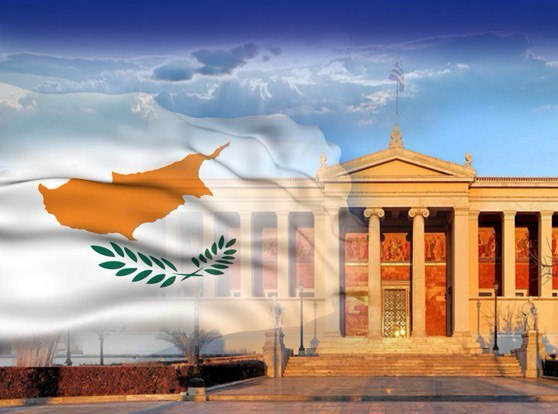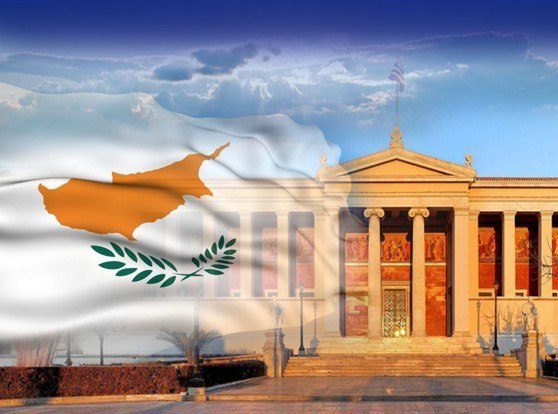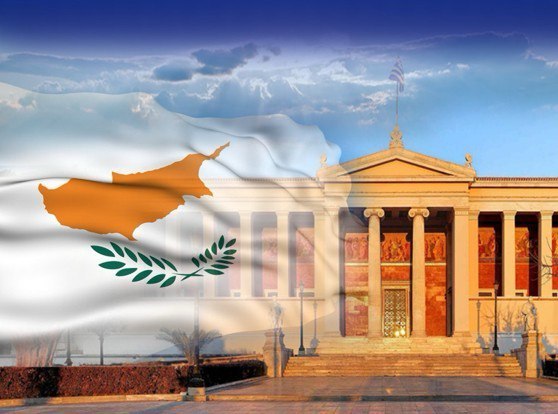New research by the National and Kapodistrian University of Athens reveals that during the glacial periods of the last million years, tiny algae grew in the Gulf of Corinth, which until now were known only from the Black Sea region.
In 2017, the International Ocean Discovery Program’s research expedition 381: The Corinth Active Rift Development, carried out deep drilling, recovering thousands of meters of sediment from the Gulf of Corinth. In the deposits the geo-environmental history of the region has been captured in detail. For more than 800 000 years, the Gulf has been isolated and reconnected to the Mediterranean, following the global sea level fluctuations. During the Earth’s warm periods, known as interglacials, the sea level was about the same or higher than today’s, resulting in the region being a sea basin. In contrast, during the glacial intervals, when the sea level were much lower, the Gulf became an isolated brackish to freshwater “lake”.
The shifts in the aquatic environment affected the organisms that lived in it and were recorded in detail in the sediments. Marine micro-organisms are among the first to be affected by variations in environmental conditions: some groups that cannot tolerate low salinity disappear and other, more resistant adapt. The dinoflagellates, microscopic algae found in the water column belong to the second category. In addition, in their short life cycle they develop a characteristic cyst, which is preserved in the sediments. The Corinthian ‘archive’ is rich in such cysts.
The dinoflagellates identified during the analysis of the sediments were divided into two main ecological groups, which alternated with each other. During the warm periods, the dinoflagellate assemblages were diverse and had great similarities to those living in the Mediterranean Sea nowadays. Furthermore, the presence of thermophilic species indicates higher temperatures compared to other areas of the eastern Mediterranean. In contrast, when the Gulf of Corinth was isolated from the Mediterranean, dinoflagellate species living in low salinity environments were identified and the diversity of assemblages appears extremely low. The predominance of Spiniferites cruciformis, but also of Pyxidinopsis psilata and Caspidinium rugosum species, especially during the glacial periods, e.g. between 130 – 191 and 424 – 478 thousand years ago (MIS 6 and MIS 12, respectively) imply the prevalence of low salinity conditions in the Gulf. These algae are found, both today as well as in the past, exclusively in the Black Sea, the Marmara Sea and the Caspian Sea, and are reported for the first time outside these regions.
Recording these particular brackish species of dinoflagellates, for the first time outside the Pontocaspian Region, is impressive and overturns the hitherto known data on their distribution. These findings raise new interesting scientific questions, says Dr. Katerina Kouli, Associate Professor at the National and Kapodistrian University of Athens. “The sedimentary deposits of the Gulf of Corinth, a valuable archive of information about the past of the Mediterranean, gradually reveals unknown aspects of the ecosystems response to climate variability over the last million years.”
The scientific research is carried out in the framework of the research project “Quaternary Environmental Changes in the Corinth Rift Area: the IODP 381 palaeovegetation record-QECCoRA“, which is implemented by the Palynolgy Group at the Department of Geology and Geoenvironment of the National and Kapodistrian University of Athens. The project is funded by the Hellenic Foundation for Research and Innovation (EL.ID.EK) within the framework of the ” 1st Announcement of ELIDEK research projects for faculty members and researchers and the supply of research high value equipment”. The study material was collected during the IODP Exp.381: The Corinth Active Rift Development” in which Greek researchers actively participated. This international environment ensures the quality and high impact of the scientific results produced, enhancing the visibility of the research produced in the country through renowned international collaborations.
Publication:
Fatourou, E., Kafetzidou, A., Marret, F., Panagiotopoulos, K., & Kouli, K. (2023). Late Quaternary Ponto-Caspian dinoflagellate cyst assemblages from the Gulf of Corinth, Central Greece (eastern Mediterranean Sea). Marine Micropaleontology, 179, 102211. https://doi.org/10.1016/j.marmicro.2023.102211 webpage: https://qeccora.geol.uoa.gr
Figure:

Microscopic photographs of brackish dinoflagellate cysts from the Gulf of Corinth deposits (scale 20μm): 1-3) Spiniferites cruciformis, 4) Pyxidinopsis psilata 5) Caspidinium rugosum, 6) Lingulodinium machaerophorum short processes: low salinity morphotype















